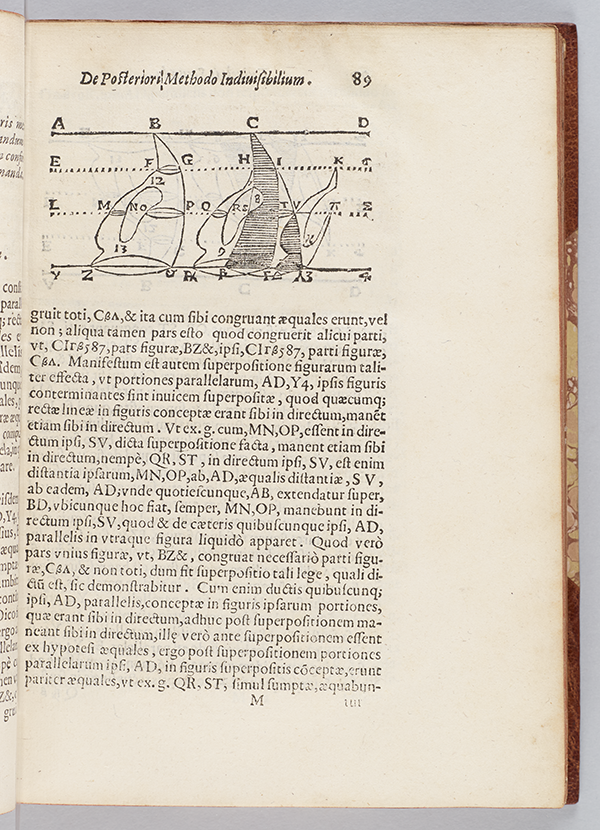- About MAA
- Membership
- MAA Publications
- Periodicals
- Blogs
- MAA Book Series
- MAA Press (an imprint of the AMS)
- MAA Notes
- MAA Reviews
- Mathematical Communication
- Information for Libraries
- Author Resources
- Advertise with MAA
- Meetings
- Competitions
- Programs
- Communities
- MAA Sections
- SIGMAA
- MAA Connect
- Students
- MAA Awards
- Awards Booklets
- Writing Awards
- Teaching Awards
- Service Awards
- Research Awards
- Lecture Awards
- Putnam Competition Individual and Team Winners
- D. E. Shaw Group AMC 8 Awards & Certificates
- Maryam Mirzakhani AMC 10 A Awards & Certificates
- Two Sigma AMC 10 B Awards & Certificates
- Jane Street AMC 12 A Awards & Certificates
- Akamai AMC 12 B Awards & Certificates
- High School Teachers
- News
You are here
Mathematical Treasure: Cavalieri's Indivisibles
Bonaventura Cavalieri (1598-1647) was an Italian mathematician and a Catholic priest of the Order of Jesuati. He is perhaps best remembered for his contributions to the foundations of the calculus through the use of “indivisibles.” His theories on this concept were summarized in his Exercitationes geometricae sex (1647).

The diagram on page 89 illustrates the concept that would eventually be known as “Cavalieri’s Principle”: if two solids of the same height are bisected by parallel planes, such that each pair of cross-sections resulting are of equal area, then the two solids possess the same volume.

Cavalieri’s first manuscript containing his ideas on indivisibles was completed in 1627 and published in 1635 (please see “Mathematical Treasure: Cavalieri’s Geometria Indivisibilibus” for more on this earlier publication). Exercitationes geometricae sex was intended to improve the exposition and respond to criticisms of the earlier work.
The images above are provided courtesy of Columbia University Libraries. A copy of this work is also available in its entirety in the Internet Archive.
Frank J. Swetz (The Pennsylvania State University), "Mathematical Treasure: Cavalieri's Indivisibles," Convergence (August 2018)




